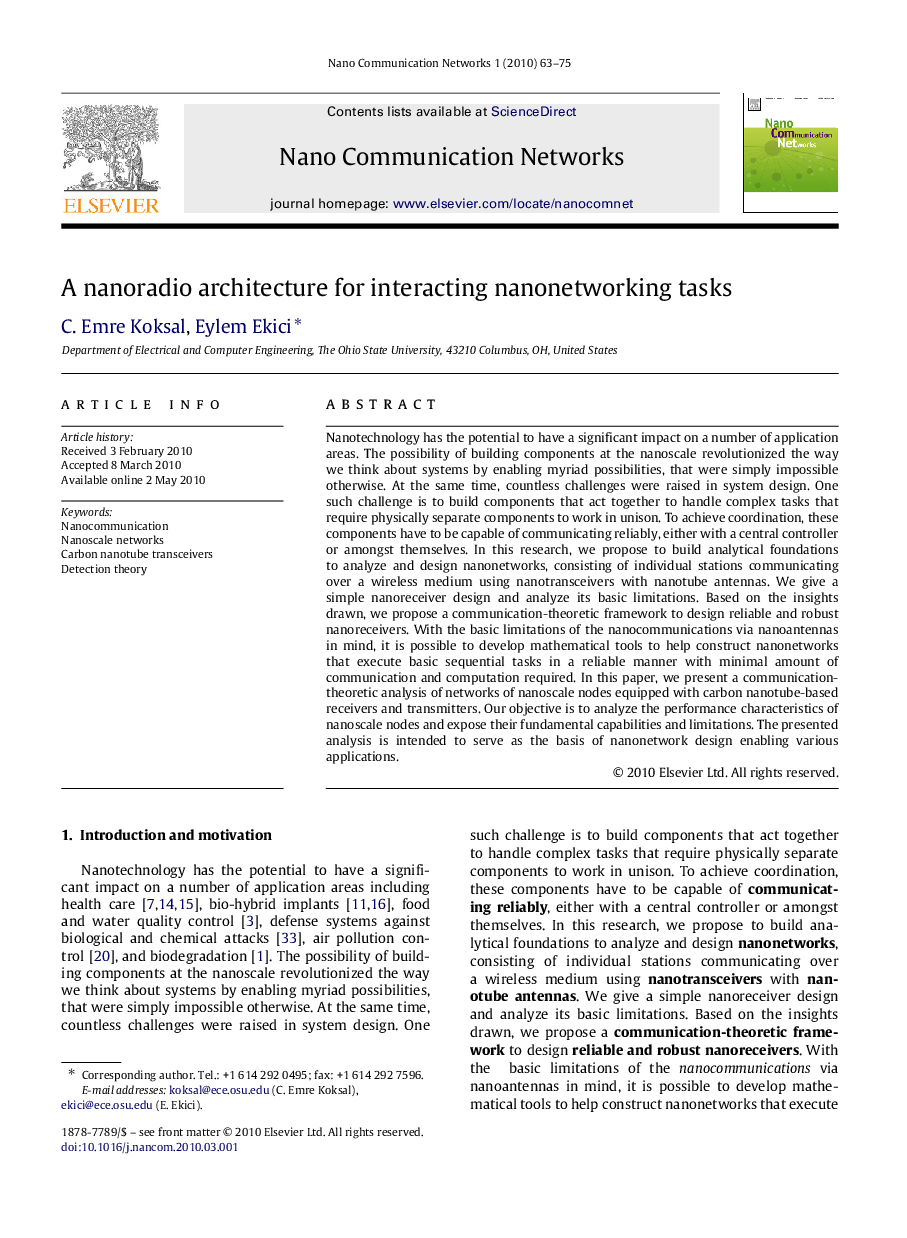| Article ID | Journal | Published Year | Pages | File Type |
|---|---|---|---|---|
| 464066 | Nano Communication Networks | 2010 | 13 Pages |
Nanotechnology has the potential to have a significant impact on a number of application areas. The possibility of building components at the nanoscale revolutionized the way we think about systems by enabling myriad possibilities, that were simply impossible otherwise. At the same time, countless challenges were raised in system design. One such challenge is to build components that act together to handle complex tasks that require physically separate components to work in unison. To achieve coordination, these components have to be capable of communicating reliably, either with a central controller or amongst themselves. In this research, we propose to build analytical foundations to analyze and design nanonetworks, consisting of individual stations communicating over a wireless medium using nanotransceivers with nanotube antennas. We give a simple nanoreceiver design and analyze its basic limitations. Based on the insights drawn, we propose a communication-theoretic framework to design reliable and robust nanoreceivers. With the basic limitations of the nanocommunications via nanoantennas in mind, it is possible to develop mathematical tools to help construct nanonetworks that execute basic sequential tasks in a reliable manner with minimal amount of communication and computation required. In this paper, we present a communication-theoretic analysis of networks of nanoscale nodes equipped with carbon nanotube-based receivers and transmitters. Our objective is to analyze the performance characteristics of nanoscale nodes and expose their fundamental capabilities and limitations. The presented analysis is intended to serve as the basis of nanonetwork design enabling various applications.
